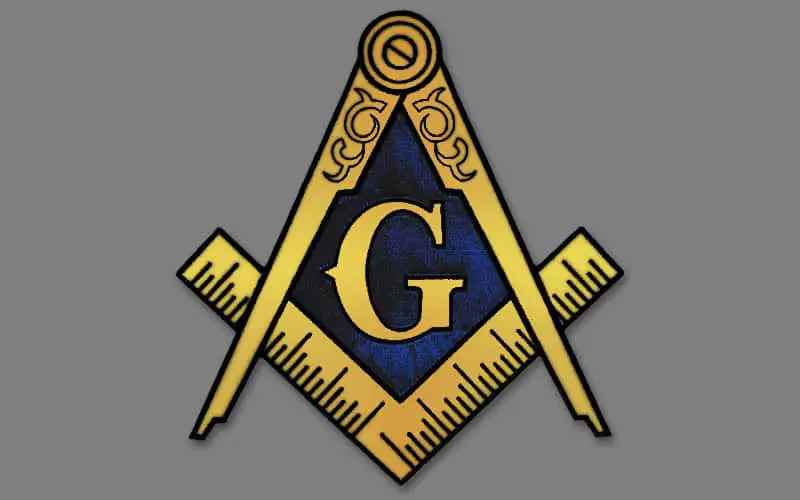Freemasonry is mysterious by nature. Is it a secret society? A cult? A boys club? Or something more? Or less?
Out of the 46 presidents we’ve had in the United States, 14 of them have been Freemason members (just over 30%). Interesting.
Freemasons are a worldwide ‘club’ originally only for men, but now also for women. The exact nature, existence, and connections that are wielded within the exclusive club have been centerfold to much speculation but are not well known.
The ‘square’ and ‘compass’ that make up the diamond shaped symbol which represents Freemasonry, is also strangely mysterious. It is said to have origins rooted in sacred geometry, and the origins of the universe. Freemasonry itself has origins dating back to a Greek Mathematician named ‘Euclid of Alexandria’ who lived in Ancient Egypt around 300 BC.
In this article, we take a step back-in-time to explore the origins and meaning of the mysterioso Freemasonry symbol.
Let’s Dive In.
Who Exactly Are the “Free Mason’s”?
Freemasonry started from a guild of stonemasons in the Middle Ages (around the year 1,400). Eventually over time, the stone mason’s guild evolved into more of a ‘fraternal men’s club’ for private members only.
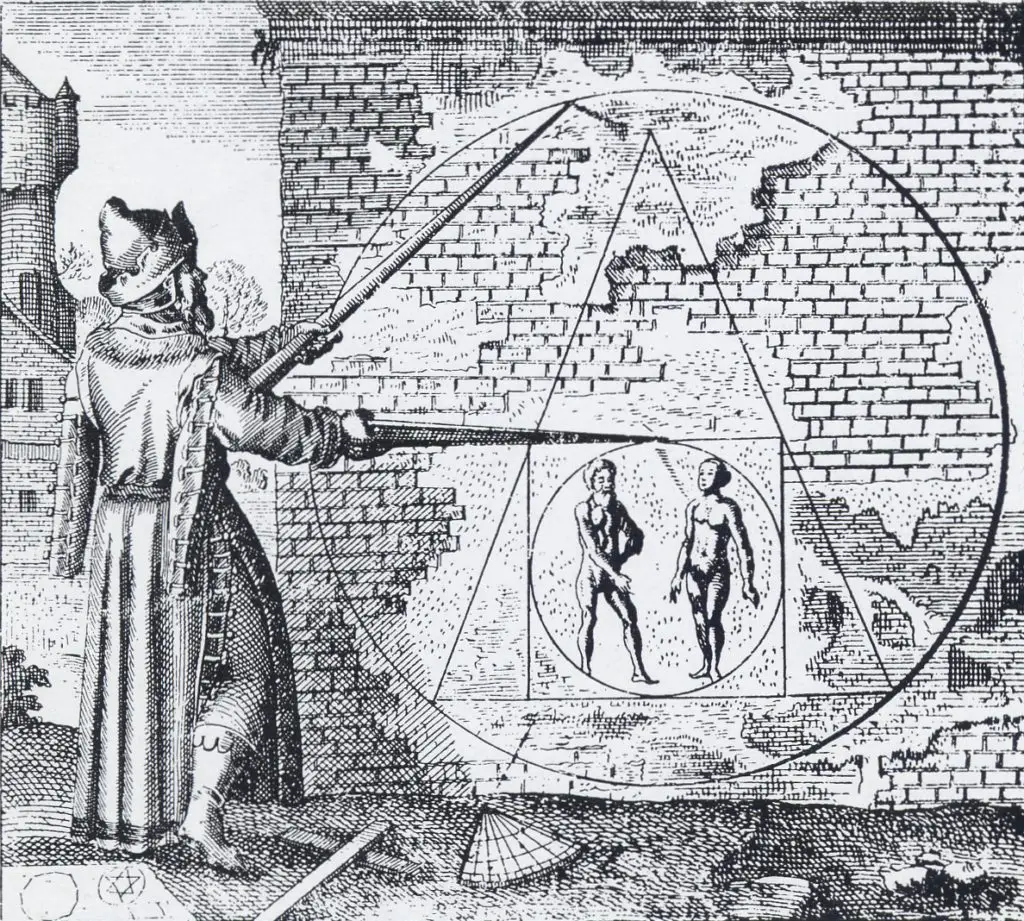
From a few of these lodges developed modern symbolic or speculative Freemasonry, which particularly in the 17th and 18th centuries adopted the rites and trappings of ancient religious orders and of chivalric brotherhoods.
By 1717 the first Freemason’s “Grand Lodge” (made from an association of smaller clubhouses) was founded and established in London England. Freemasonry adopted some of the traditions, ceremonies, and ‘rites of passage’ from ancient religious orders and of chivalrous brotherhoods which only added to the mysteriousness.
When we think of a stone mason today, we usually think of a stereotypical construction worker carrying heavy block or stacks of brick (at least I do). But the original English word for ‘mason’ was a Latin term “sculptores lapidum liberorum” or “sculptor of freestone”.

Freestone was a term for a ‘smooth’ type of stone (without grains) that could be sculpted ‘freely’ in any direction. So a “Free-mason” was much more of a mathematically skilled sculptor (think Michelangelo) as compared to a rough carpenter.
But just like in today’s stone mason’s unions, there are levels to Freemasonry.
- Entry level masons are known as “Apprentices”
- Second degree Freemason’s are known as “Fellowcraft Mason’s”
- Third Degree Freemason’s are known as “Master Mason’s”
Freemasonry is an “oath-bound society” which promotes the beliefs of devotion to shared values and shared interests, moral discipline, and mutual assistance to other members and members of the community.
Freemasonry is also well known for concealing (at least some of) their, customs, traditions, and activities from the public eye.
The Ancient Origins of the Freemasons
The earliest known Freemason document is known as the “Halliwell Manuscript” (AKA the “Regius Poem”) which has been dated back to 1,390. The Regius Poem was a document used to describe the duties of the members of the lodges, and which every member would have to swear upon.
The Halliwell Manuscript’s opening line was…
“Here begin the constitutions of the art-of-geometry according to Euclid”
Euclid and the Freemasons
‘Euclid of Alexandria’ as he was called was a Greek mathematician who lived between 325-270 BC in Alexandria Egypt. This is right around the same time the famous “Library of Alexandria” was being constructed, making Alexandria the center of all advanced knowledge of the time.
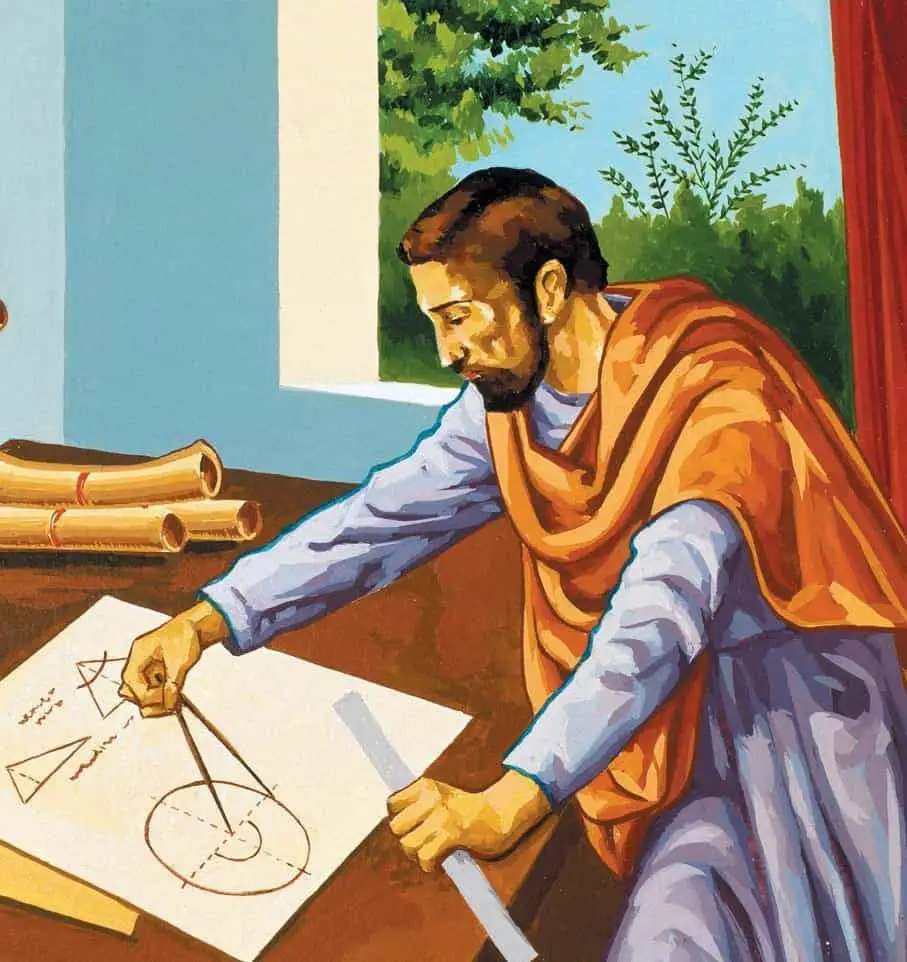
During his time in Alexandria Euclid wrote the book “Elements” which adopted principles of logic, mathematics, geometry and reasoning.
Euclid’s book ‘Elements’ has been referred to by many esteemed professionals as the most successful and influential textbook ever written. It was said that even President Abe Lincoln even kept a copy in his saddle bag.
Euclid did not invent geometry, but he took well known principles form other mathematicians before him, and brought their separate works together to form a more universal understanding. Including the works of the well-known Greek mathematician Pythagoras, who created the Pythagorean theorem. In doing so, Euclid became known as one of the ‘fathers of geometry’
Euclid’s book Elements inspired famous scientists who would go on to discover the core laws of physics that govern all of the universe. Examples include the famed Copernicus, Kepler, Galileo Albert Einstein, and Sir Isaac Newton, all inspired by Euclid of Alexandria.
It’s fascinating that over 1,500 years after Euclid had died, the Freemason’s used his principle understanding of geometry and the universe as guidelines for their beliefs.
The Free Mason Symbol Meaning – Breakdown
The Letter G
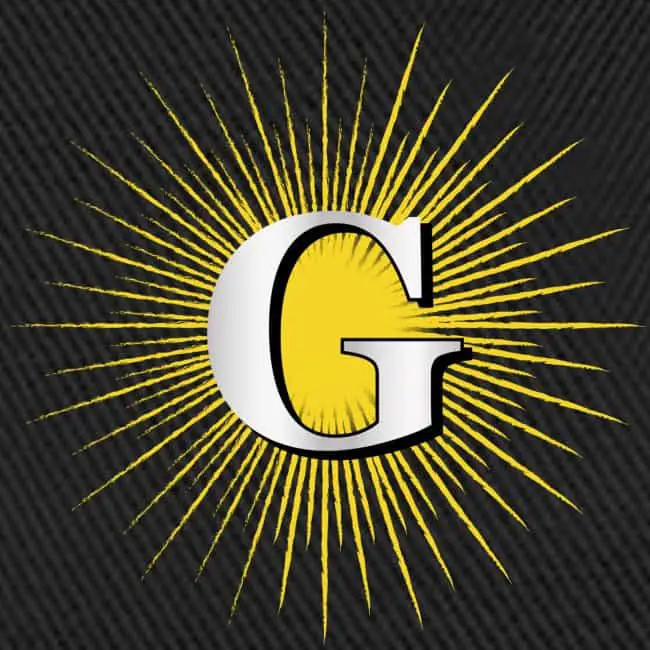
According to the references I found from the “Grand Masonic Lodge of Ohio”, and the Masonic Lodge of Education, the letter G was an American addition to the freemasonry symbol, sometime between the years1730 and 1768. The letter G was not used in England or anywhere else beforehand.
Although some say the “G” stands for God, it is generally agreed to stand for “Geometry” and or “Great Architect of the Universe,”.
The Masonic letter G reminds Freemasons that “every act is done in the sight of the Great Architect of the Universe”.
The Square
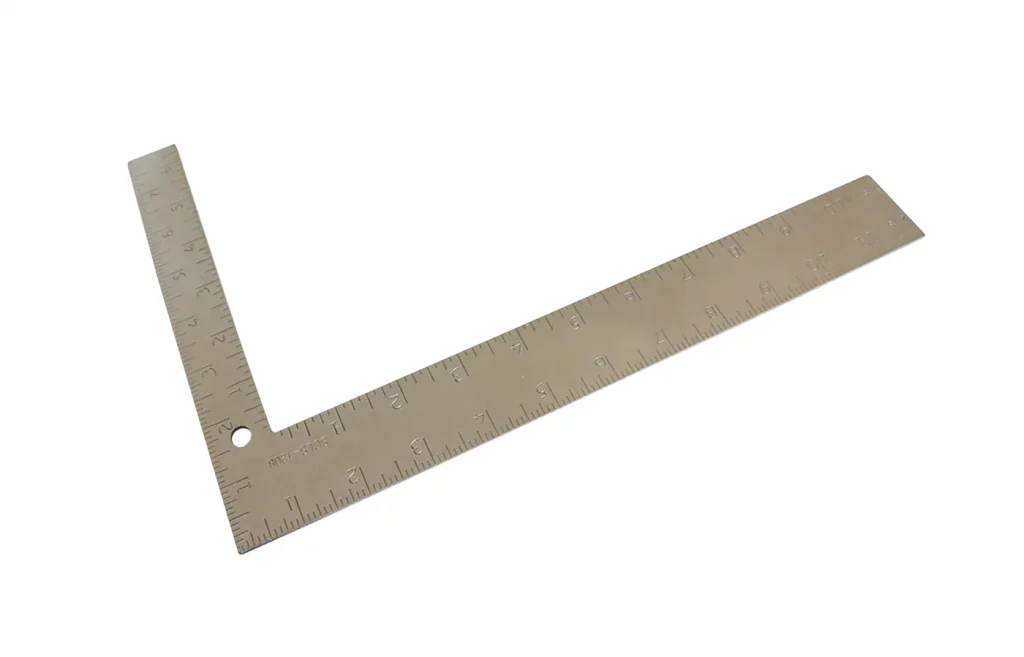
The builder’s square sits at the bottom of the freemasons symbol with its perfect right-angle outside corner pointing vertically down.
A builder’s square is a flat-edged tool that forms a perfect “right angle” (90-degree angle). This is a critical tool for builders, especially for high skilled craftsman such as a freestone mason, because it allows you to draw and carve perfect square corners.
In Freemasonry, the square is used to symbolically-represent lessons of morality. The idea is that being “square” in your actions implies you’re being honest, true, and fair in your actions.
The Compasses
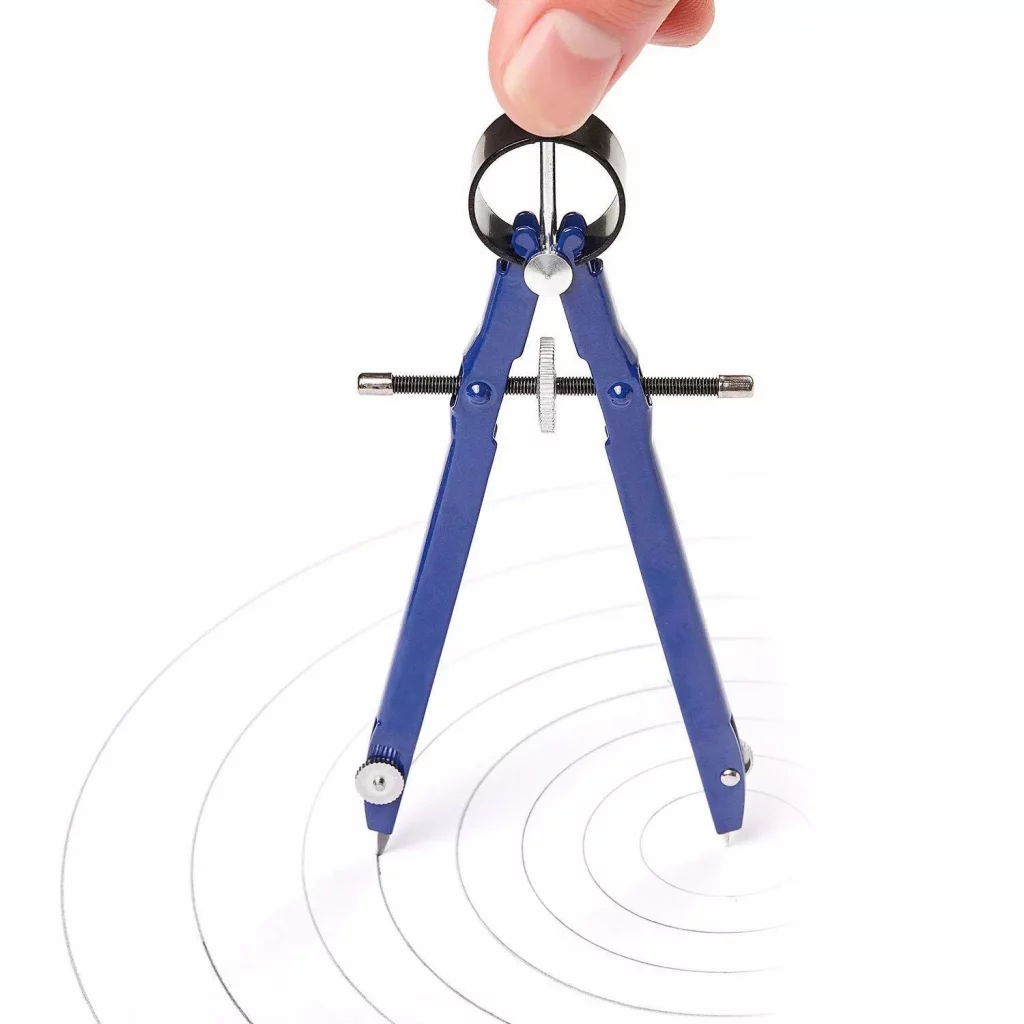
Not to be confused with the magnetic North “directional compass”, compasses are for drawing arc’s and circles with great precision.
Most people today know the compasses as a device for drawing perfect circles from their high school geometry class. Or maybe even from drawing radiuses on maps in geography class.
The compasses used in the Freemason symbol were critical for builders and masons throughout the ages for carving, designing, and building structures with precision geometric accuracy. The compasses consist of two “legs” equal in length that are attached together at a pivot point at the top.
If you were to draw a complete circle using the compasses, there would be circle with a dot in the exact middle.
The “Grand Lodge” of Freemasonry in Pennsylvania teaches that the compasses are used to symbolically represent a boundary line around our desires. The dot in the middle represents the ability to avoid overindulgence, maintain moderation, and restraint, which is believed to be the foundation of morality and wisdom.
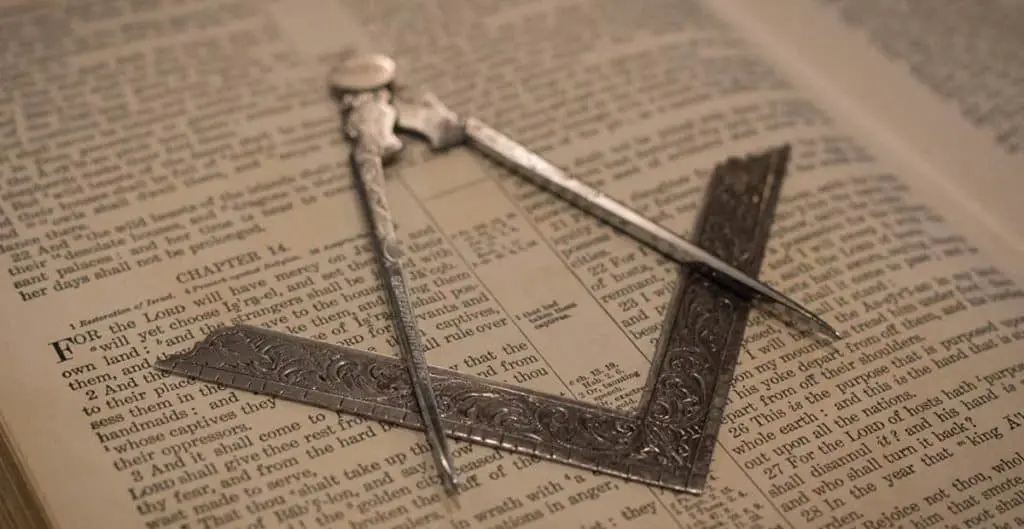
Said another way, the compasses symbolize self-restraint and the ability to reign in your yearnings to live a balanced life. When added with the square, the square and compasses together are meant to serve as a reminder that acting true and square towards others and balancing one’s own needs with the needs of others will lead to a balanced life of integrity.
The Free Mason Symbol and Alignment With Sacred Geometry
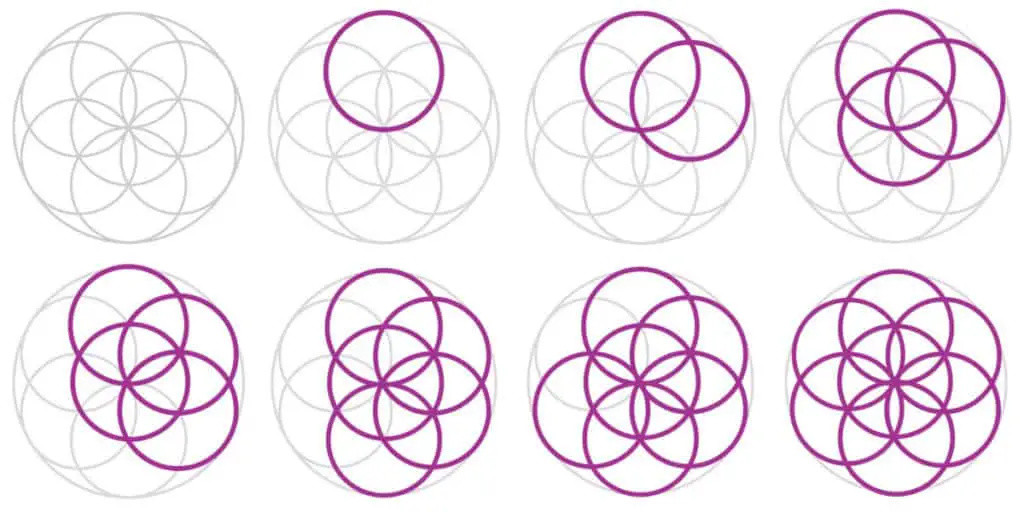
There’s a little bit more to the Freemason’s symbol than the “letter G”, a builder’s square, and geometry compasses. The proportions, angles, and alignment of the symbol are in direct proportion to other sacred geometric symbols such as the Flower of Life, Metatron’s Cube, the Viscus Pisces, and the Fibonacci Sequence.
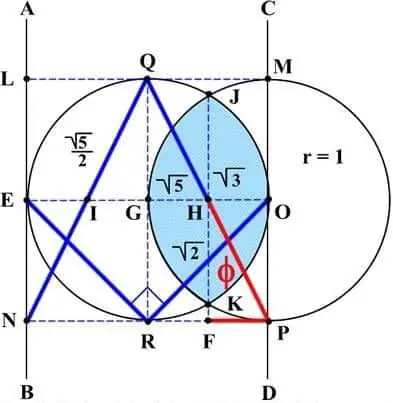
This is no coincidence, as at the heart of Freemasonry is the Geometry of the universe, as noted by the founding texts references to Euclid of Alexandria. All ancient and sacred geometry have a common denotator in which they follow the same mathematical principles that universally apply to all things within our universe.
Final Thoughts: The FreeMason Symbol’s Meaning
Like most sacred symbols, there are multiple interpretations, multiple meanings, and multiple ‘levels’ of symbolic significance, and the Freemasonry symbol is no different.
The Freemasonry symbol is rooted in the sacred and ancient geometric principles that govern our universe and our very existence. On a more ‘human level’, the square and compasses represent both the tools used by ancient builders and the morals and values to live a conscious life of integrity.
Check Out Our Other Interesting Articles About Symbolism
- The Flower of Life: Symbolism, Meaning & Origin Explored
- The Lotus Flower Meaning | Symbolism & History
- Archangel Metatron’s Cube: History, Origin & Symbolism
- The Namaste Symbol | Om Symbol Meaning | Yoga Symbols
- Tree of Life Symbol: Meaning & Origin
- The Meaning Behind The Freemason Symbol: History & Origin
- The Dharma Wheel Meaning: Origin Explained
- The Ankh (unk) Symbol: Ancient Egyptian Meaning
- Elephant Symbolism & Meaning Explained
- Scarab Beetle Symbolic Meaning | History & Origin
- Symbolism, Meaning, and Origin of The Serpent
- What Are Sacred Geometry Symbols & Meanings
- What Is The Egyptian Eye Of Ra ? Symbolism Explained
- The Eye of Horus vs. The Eye of Ra | Meaning
- What’s Your Third Eye? How To Open It ?
Loved what you read?
Hit that share button and let the world in on the secret – we’d be thrilled!
Got thoughts? We’re all ears for your feedback, corrections, or a good old chat. Don’t be shy; drop us a line.
And hey, don’t miss out on our curated list of must-reads in the recommended books section.
Big thanks for diving in with us today!


